Optimizing the homepage is by far one of the most confusing aspects of SEO. I admit that much of that is because of the many misconceptions surrounding the idea of homepage SEO.
In this post, I’ve decided to clear them all up and show you how to create an SEO-friendly homepage.
But let’s clarify something before we begin.
Does Homepage SEO Even Exist?
Well, there are many conflicting opinions on the matter. However, I believe that although you should optimize your homepage — it is an asset that can rank, after all — there is no need to overthink it.
Because ultimately, a homepage should rank for branded keywords mostly. Now, that doesn't mean that its SEO value is minimal.
Quite the contrary.
A homepage is your primary landing page. It's also the one place visitors can come back to if they ever get lost when looking for specific information on your pages.
But it shouldn’t be the page that drives traffic from specific, usually commercial, keywords. Instead, it should appear in the search results whenever someone looks up your brand or the business.
There may be some exceptions, though.
Many SaaS companies include the category keyword in the homepage metadata. In their case, doing so may make sense. For those companies, the homepage may play a commercial role. And in the case of many of them, it might be one of a handful of pages on the entire website.
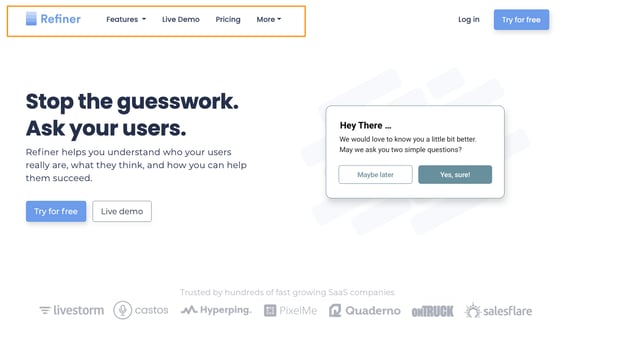 (Example of a small SaaS website where the home page plays a commercial role.)
(Example of a small SaaS website where the home page plays a commercial role.)
Travel sites may optimize the homepage for their primary category, too. It’s worth noting that in the case of multi-location sites, individual location pages will be optimized for those keywords instead.
For example, the main homepage of this travel chain is optimized for branded terms only.
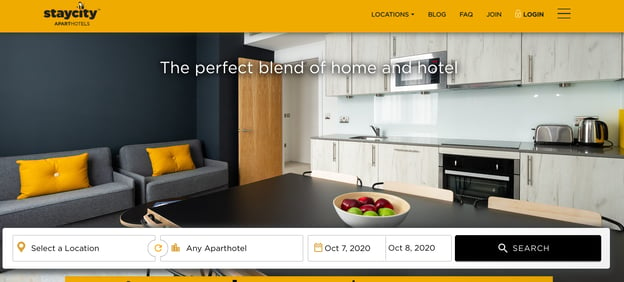

However, the company’s site features dedicated internal pages, and these are focused on ranking for specific, commercial keywords instead.
Why is a Homepage Important for SEO, Then?
There are two key reasons:
- A homepage is often the primary entry point for crawlers. What’s more, Google will use the homepage’s content to determine how relevant your site is to prospective visitors and determine your authority in the market category or area.
As a result, not focusing on a single, specific, commercial keyword on the homepage will allow you to signal a broader topic authority to the search engine. - The homepage acquires the most organic links. These will often come through media mentions and other PR activities.
But as you can see, neither of those need you to optimize the page for any specific, non-branded keywords.
How to Create a Homepage That Assists SEO?
Homepage SEO relies more on ensuring that the page delivers on its primary SEO functions: providing a starting point for crawling the site, communicating the topical authority, and attracting organic links.
And there are specific actions you can take to ensure the above. Here are the most important ones:
#1. A Clear Explanation of What the Company Does (and for Whom)
The homepage is often the primary entry point for users, too. As a result, it welcomes them to your business and helps many visitors to understand two important things about the business:
- What your company does, and
- What makes it different from many similar vendors.
The homepage should also help visitors reach their goals by providing clear and easy-to-use navigation (more on optimizing that in just a second) and relevant calls to action.
Including a clear explanation of what the company does, how it assists customers, and even whom it wants to help in the first place will make the page more relevant to targeted traffic.
The result: lower bounce rate, better engagement metrics, and good user experience … all of which will contribute to better rankings and search visibility.
#2. A Clear Navigation (On Mobile, Too)
With the homepage being the primary entry point, it’s more critical than ever to ensure that users can get where they need to from there.
This step involves creating a clear and easy-to-use navigation that also works well on mobile devices.
First of all, to ensure full crawlability, the primary navigation must link to the most important top-level landing pages. Crawlers can access assets further down the page from there.
Such navigation will be clear to use and result in a much better user experience.
Mobile navigation is another issue. With JavaScript used to render mobile navigation, websites often fail to load those links properly when JS is disabled.
This results in hamburger menus not working properly, which prevents mobile users from accessing links to top-level content.
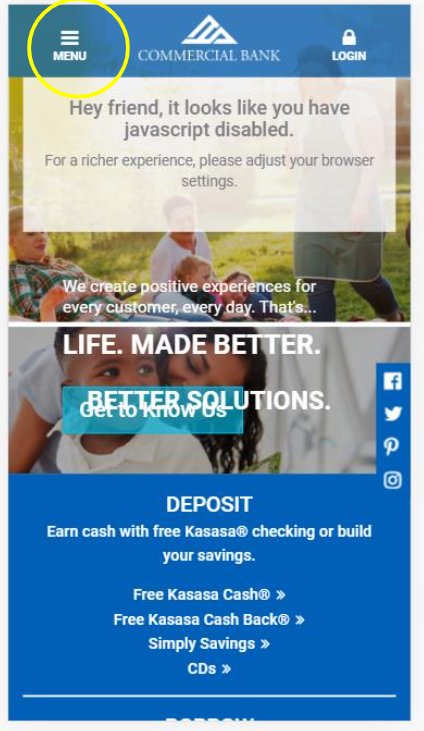
A great solution to this problem is to include the links to top-level pages outside of the hamburger menu as well. This way, they will work regardless of whether the JavaScript is enabled or not.
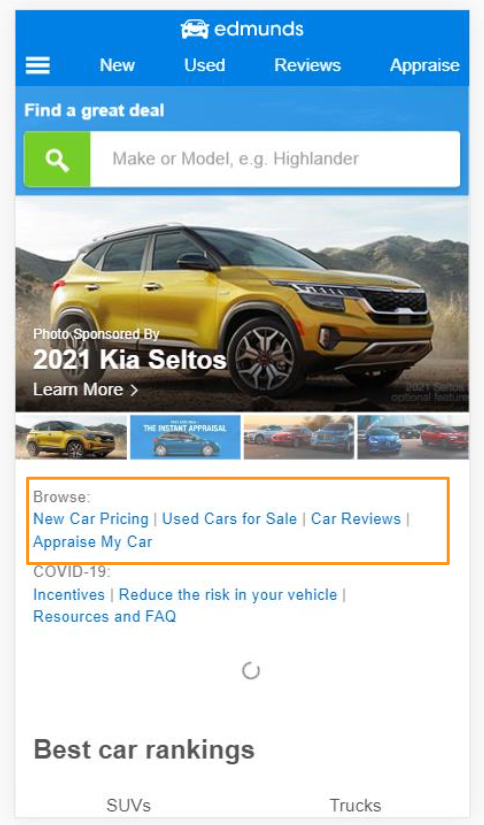
There are some other aspects of navigation I’d like you to remember when working on the homepage:
- It is a common practice to link the business logo to the homepage. Doing so provides users with easy access to the website’s home, after all. Whenever a person gets lost in the site’s content, they can click on the logo and return to the homepage. When optimizing the logo, make sure to include the keywords that best describe your brand in its alt tag. For example, aside from including the brand name, also mention its main category or product.
- Make sure that your site structure and page hierarchy are logical and clear to follow. Then, use internal links to demonstrate the structure and make it easy for users and crawlers to access top-priority content.
- Use the SiteNavigationElement schema markup. This helps the search engine to understand the site structure and navigation better.
#3. Brand and Organization Schema
The Organization schema markup will help generate brand signals which can enhance your Knowledge Graph in the SERP.
When optimizing the homepage’s schema, be sure to specify your logo, social profile links, and corporate contact information so that the search engine can include those in the knowledge graph.
#4. List Core Offerings With Relevant Links
What’s the ideal scenario for a user landing on your site?
Well, to me, it’s having them land on the right content that delivers the information they’ve been searching for.
This, in a case of informational intent, could be a blog post or landing page dedicated to the person’s topic of interest. When it comes to your products or services, it’s a dedicated product or category page.
But, naturally, many users will begin their journey through the site from the homepage. However, you can design the page to assist them with getting to the right information quickly.
One way to do it is by listing your core offerings with links to relevant content. This could be a dedicated section within your primary navigation or a list of top-categories or products within the homepage’s body.
#5. Metadata Focused on the Company's Specialty
I’ve mentioned including the company’s specialty in the business logo’s alt tag in another section above. However, that’s not the only place where you should mention what the company is known for.
You should also include it in the homepage’s metadata — the homepage’s title and meta description.
I always recommend starting with the brand, then follow with the company’s core specialty.
That’s what the hotel chain I used as an example above does. Here is their metadata in the homepage’s code:

Notice that the title tag does not target any specific keyword. Instead, it focuses on the brand and what it does.
Why optimize the homepage’s metadata this way? Well, the answer is quite simple.
Remember that the majority of customers will, most likely, of course, find that page in search through a branded keyword. Optimizing the page’s title this way will immediately reassure that this is, in fact, the company’s website.
It will also reveal the company’s offering and main specialty.
#6. A Proper Order of SEO-friendly Headers with Relevant Information in Each
Not every homepage will include a lot of content (and that’s perfectly fine, by the way).
Nike’s homepage, for example, relies almost entirely on images and visuals.
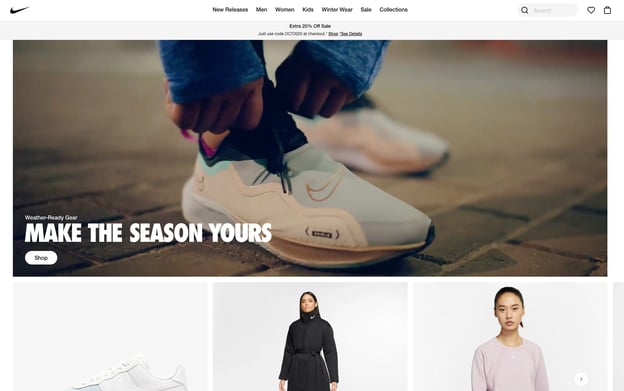
You must admit that such an approach matches the company’s offering and how it presents itself in the market.
But many brands will include relevant content on the homepage. If that’s the case with yours, make sure that you organize this information correctly, to make it easier for both users and crawlers to understand it.
One of the quickest ways to do it is by using SEO-friendly headers in the correct order, starting with H1 and moving down the list.
In fact, I recommend that you use the H1 only once to display the company’s tagline or it’s main selling proposition.
This is what we’re doing on our website as well. The H1 heading communicates our SEO platform’s main value proposition:
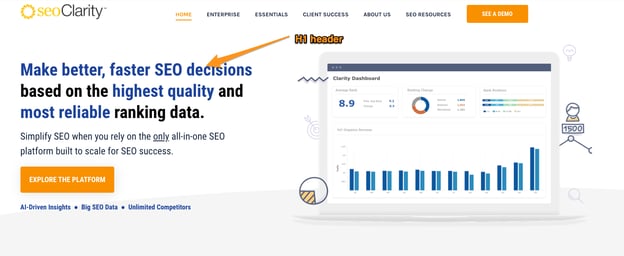
Any subsections or categories should be set with H2, whereas their sections should be styled as H3 and lower.
What to Do If You Want to Target Specific Niche Keywords on the Homepage?
The solution is pretty simple, actually: create dedicated assets to target those keywords you want to rank for. And there is a simple method for organizing those:
- If these are your primary commercial phrases (i.e. keywords that directly relate to something you sell or offer customers) then create landing pages optimized for those keywords, specifically.
- In a case of phrases with informational intent, publish cornerstone, evergreen content optimized to rank your domain for those keywords.
Of course, this does not mean that you have to build a page for every phrase you’ve found while researching keywords. Google will rank each page for many different phrases, after all.
As a result, you can cluster many similar keywords together, build content relevant to all of those keywords, and more.
How to Expand the Homepage with More Content
Finally, let’s discuss a scenario in which you do want to build a content-rich homepage. You want to go beyond explaining what your business does, its unique selling proposition, and core offerings in this situation.
The problem: there isn’t that much other information that you could also include on the homepage. What are your options, then?
Well, you have a few.
You can reference your latest informational content — blog posts and similar pages. Or include cornerstone content — long-form, evergreen guides that you’d want any reader to notice. Here’s one example from Baremetrics:
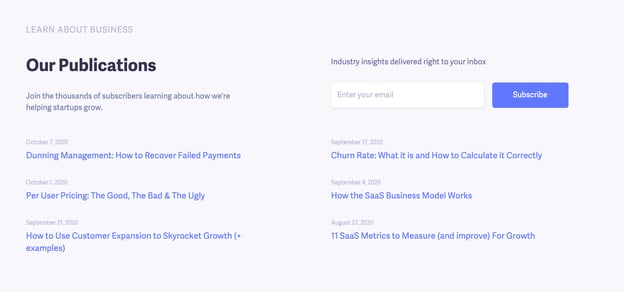
Another idea is to add an FAQ section at the end of the homepage. Such content will allow you to answer your potential customers’ questions while expanding the copy with additional content (and even gaining some SEO advantage from that).
Finally, adding testimonials or use cases is another way to add more content to the homepage, while providing value to potential customers.
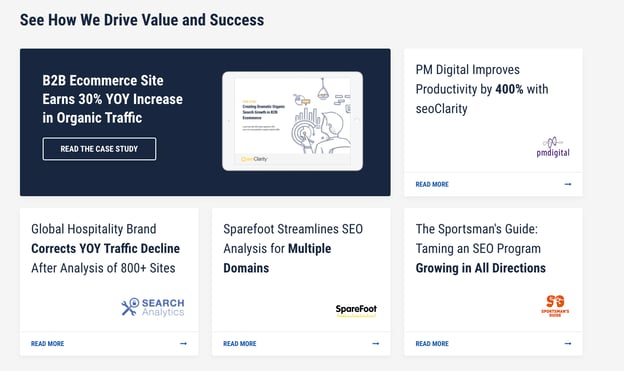
Each of those three methods will allow you to expand the homepage’s content with useful information, improve the site’s structure and internal linking, and even boost conversions from that page.
Conclusion
Homepage SEO can be confusing. For one, it’s tempting to rank the homepage for keywords relating to a company’s offering or category. However, that’s not the best way to go about optimizing the homepage.
Instead, you should create an asset that assists SEO in the ways I’ve explained above, and ranks for brand-related terms.




.png?width=140&name=Untitled%20design%20(10).png)
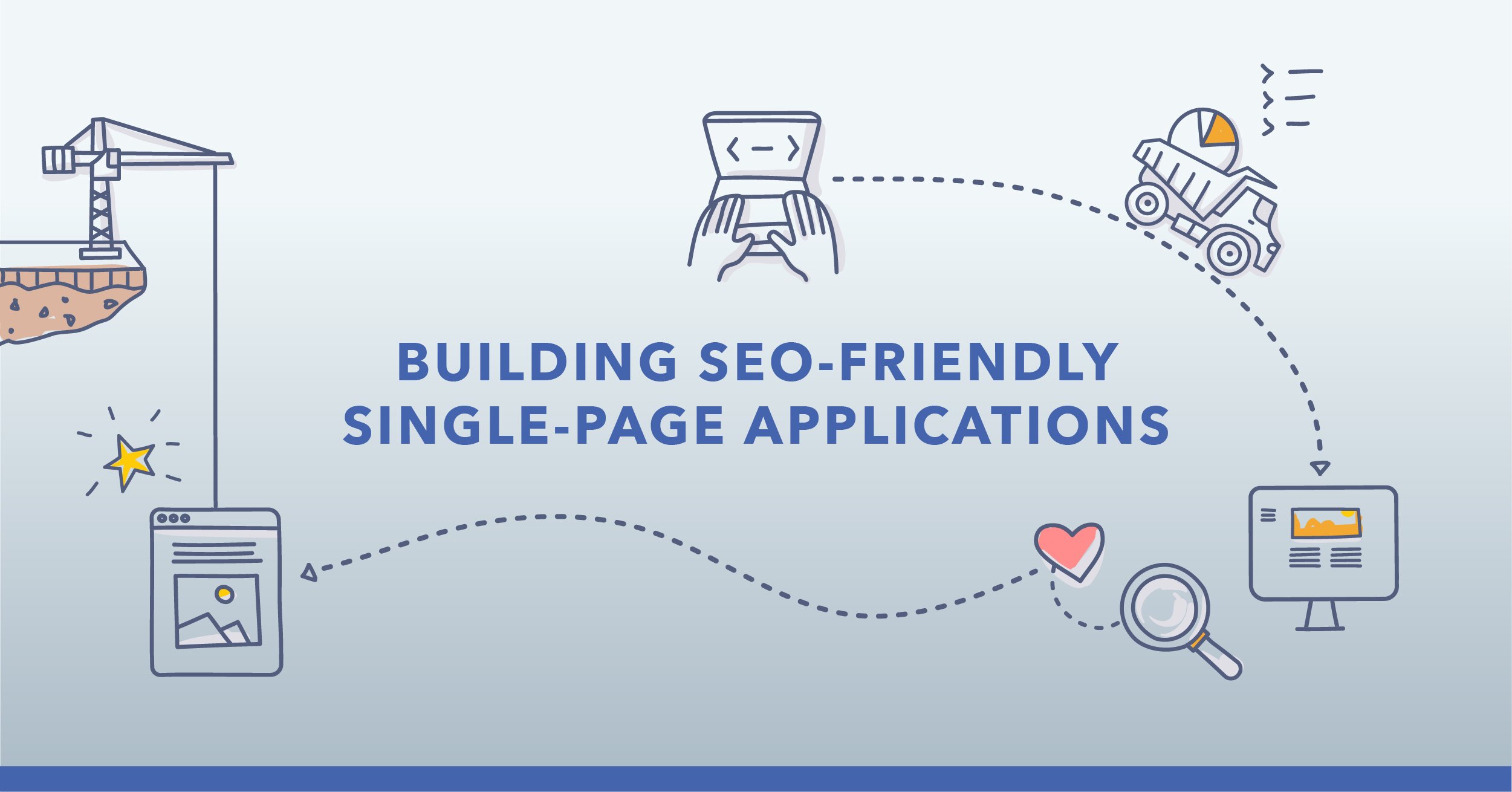


Comments
Currently, there are no comments. Be the first to post one!